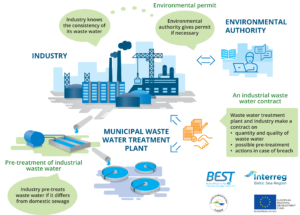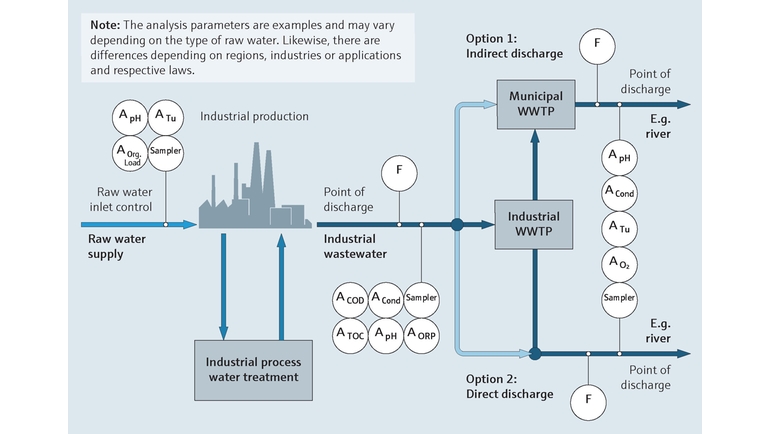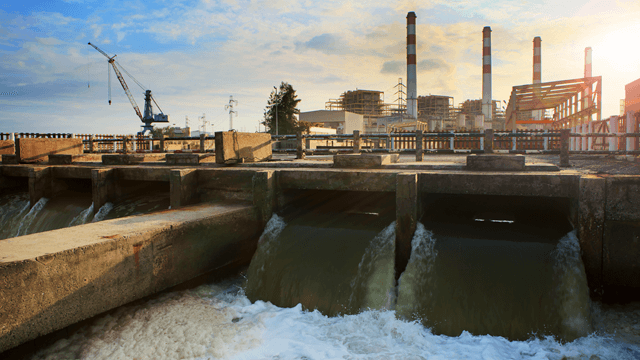Developments and Advances in Hazardous Waste Water Therapy Technologies
The landscape of industrial wastewater therapy is undertaking a transformative change, driven by innovations that boost both performance and sustainability. As governing requirements progress, the assimilation of AI and maker knowing right into wastewater management systems assures to enhance procedures and make sure conformity.
Summary of Waste Water Therapy Technologies
Wastewater therapy innovations incorporate a series of approaches designed to get rid of impurities from industrial effluents before their launch into the environment. These modern technologies are important for preserving eco-friendly equilibrium and making certain conformity with environmental policies. The key classifications of wastewater treatment consist of physical, chemical, and biological approaches, each offering unique purposes based on the nature of the pollutants existing.

Biological treatment methods use microbes to deteriorate organic issue, making them particularly efficient for organic-rich effluents. Methods like activated sludge and biofilm reactors harness the all-natural destruction capabilities of bacteria, causing considerable reductions in biochemical oxygen need (BODY)
Advanced Filtration Techniques
Advanced filtering methods stand for an essential development in the world of commercial wastewater treatment, improving the efficiency of impurity elimination processes. Industrial Waste Water Treatment. These methods incorporate a variety of innovations, including microfiltration, ultrafiltration, nanofiltration, and reverse osmosis, which give sequential obstacles for various particle dimensions and chemical frameworks
Microfiltration and ultrafiltration use membrane systems to remove suspended solids, bacteria, and bigger organic molecules, boosting the high quality of effluent before more therapy. Nanofiltration bridges the gap in between ultrafiltration and reverse osmosis, successfully removing divalent ions and natural substances, therefore minimizing the load on downstream procedures.
Reverse osmosis uses the highest possible degree of filtration by allowing just water and small particles to travel through its semi-permeable membrane layers, making it ideal for recovering top quality water from industrial effluents. Current improvements in membrane technology, consisting of the development of even more sturdy and fouling-resistant materials, have significantly improved functional performance and reduced prices.
Incorporating these sophisticated filtration methods not only improves the total therapy procedure but also adds to sustainability initiatives by making it possible for water reuse and resource healing in commercial setups. (Industrial Waste Water Treatment)
Organic Treatment Innovations

Moreover, the growth of crafted biological systems, such as membrane layer bioreactors (MBRs), integrates biological treatment with sophisticated membrane layer filtering. This assimilation enables for higher effluent high quality and minimized impact, making it suitable for space-constrained commercial facilities. Technologies in genetically engineered microorganisms have actually likewise arised, improving the biodegradation of specific impurities, such as pharmaceuticals and heavy metals, that are traditionally challenging to eliminate.
Additionally, the implementation of bioaugmentation methods, where beneficial germs are introduced to boost the existing organic therapy processes, has actually revealed encouraging outcomes in boosting therapy performance. These developments collectively represent a pattern in the direction of even more sustainable and effective organic treatment methodologies that can adjust to the developing complexities of industrial wastewater streams. As sectors continue to focus on ecological conformity, these biological technologies will play a crucial role in wastewater monitoring.

Resource Healing Methods
In commercial settings, the combination of source recuperation approaches has become significantly important for boosting sustainability and minimizing waste. These techniques concentrate on drawing out check out here useful products and power from wastewater streams, thus transforming prospective pollutants into multiple-use sources.
One noticeable approach is nutrition healing, where nitrogen and you could look here phosphorus, typically existing over in wastewater, are recorded and exchanged plant foods. This not just lowers environmental influences however likewise supplies a circular economy option for agricultural applications. Furthermore, innovations such as anaerobic food digestion permit the conversion of natural waste right into biogas, a renewable resource source that can offset nonrenewable fuel source use in commercial procedures.
Furthermore, progressed purification and membrane layer modern technologies help with the recuperation of commercial spin-offs such as salts and metals. These recuperated materials can be rehabilitated right into production processes, reducing the need for virgin sources.
Future Fads in Waste Water Management
As sectors progressively prioritize sustainability, the future of wastewater management is readied to undertake considerable changes. Technical innovations, such as expert system and artificial intelligence, will certainly make it possible for much more effective surveillance and monitoring of wastewater systems. These modern technologies can predict upkeep demands, optimize therapy procedures, and enhance decision-making, eventually minimizing operational costs and environmental effect.
Additionally, the assimilation of round economic climate principles will certainly play a critical function in wastewater monitoring. Industries are expected to move towards systems that not only treat wastewater however also recover useful sources, such as nutrients, water, and power. This shift will certainly reduce waste and advertise the reuse of products, lining up with global sustainability goals.
Arising treatment methods, such as membrane bioreactors and progressed oxidation procedures, will even more enhance the efficiency of wastewater treatment, enabling greater top quality effluents ideal for reuse. Furthermore, regulative frameworks are most likely to advance, stressing stricter standards for wastewater discharge and motivating industries to adopt cutting-edge treatment services.
Verdict
In verdict, the advancement of commercial wastewater treatment technologies demonstrates a considerable shift towards enhanced efficiency and sustainability (Industrial Waste Water Treatment). Advancements in innovative filtration techniques, biological treatments, and source recovery methods highlight the industry's commitment to environmental stewardship.
The landscape of commercial wastewater therapy is undergoing a transformative shift, driven by innovations that enhance both effectiveness and sustainability.Wastewater therapy innovations encompass a variety of techniques designed to remove contaminants from commercial effluents prior to their release right into the atmosphere.Utilizing the power of organic processes has led to significant technologies in the therapy of industrial wastewater.In addition, the execution of bioaugmentation techniques, where useful microbes are presented to enhance the existing biological therapy procedures, has shown appealing results in boosting treatment performance. These advancements jointly symbolize a fad towards even more efficient and lasting organic treatment techniques that can adapt to the progressing complexities of commercial wastewater streams.